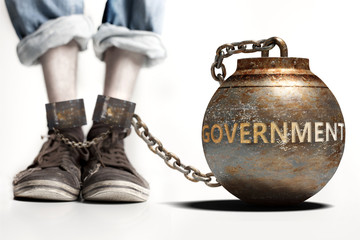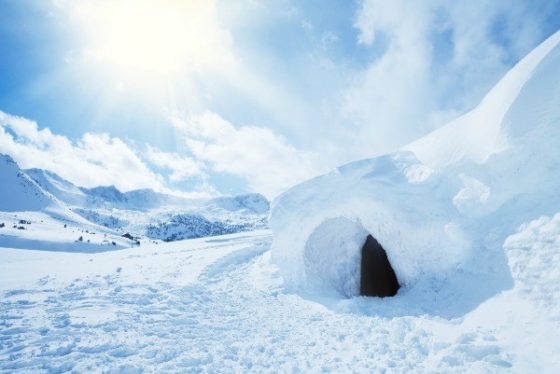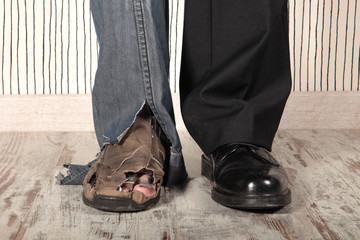90 Days of Collapse: What to Expect and How to Prepare

Podcast: Play in new window | Download
The past five years have been a wake-up call. And things don’t appear to be settling down anytime soon. From disrupted supply chains during COVID and civil unrest to assassinations, ongoing economic instability, and global tensions verging on World War III, we’ve all had a front-row seat to just how fragile our world and the systems we rely on really are. That illusion of stability? Currently, it feels thinner than it has at any point in my life.
What happens if things grind to a halt—not just for a few hours or days, but for weeks or months? That’s the focus here: a breakdown that spans more than 90 days. No power. No supply trucks. Outside help isn’t coming. When the trucks stop rolling and the shelves stay empty for weeks—not days—you’ll see just how fast civility disappears.
This isn’t about trying to scare you beyond what the world is currently throwing at you. It’s about acknowledging that we have real problems and, under the right conditions, those cracks could turn into a full-blown break. If you understand how people behave during prolonged disruptions, you can stay one step ahead of the problems—and that might be the difference between scraping by and staying secure.
In this article, I will break down what you can expect week by week during a nationwide collapse. I’m also going to cover what you can do—right now—to stack the odds in your favor.
TL;DR: This article outlines a realistic timeline of societal collapse, from the first 72 hours to 90+ days, and provides actionable steps to enhance your self-reliance at every phase.
Quick Look at What You’ll Learn
Motivational Disclaimer
I need to preface this by stating, if you’re looking at this and thinking, “I don’t have 90+ days of supplies, nor do I know what planning for a year or more even looks like,” don’t let that discourage you. The truth is, the odds of needing to go that long without outside help are exceedingly remote. What matters is building beyond a week or two, because every extra day you add to your capability buys you time and flexibility when the lights go out. Preparedness isn’t a finish line you cross—it’s a path you keep walking. Keep plugging away, and you’ll continue to add days to your ability to live without outside assistance. With time, you’ll get there.
The First 72 Hours: Calm Before the Storm
At first, things might feel somewhat normal. The lights go out. Cell service drops. There’s a lot of speculation, but there’s no confirmation. People assume it’s temporary: “Everything will get back to normal, just wait.” Normalcy bias can affect us all.
Within a day or two, that calm patience turns to confused worry. ATMs don’t work. Stores stop accepting cards. Gas stations shut down. The shelves go bare.
By Day 3, the lack of information, resources, and signs of relief starts the meltdown. Police are overwhelmed, and some officers are no longer showing up to work. Looting begins. Initially, it’s mostly convenience stores and liquor stores. Then the grocery stores start to get hit. People who didn’t prepare are now desperate—and desperate people make dangerous choices. Likewise, opportunists see the opportunity to take advantage of the situation and others.
Key Priorities in the First 72 Hours:
- Recognize the situation for what it is, and hedge your bets that it may get worse before it gets better.
- Enact your emergency plan: issue a warning order to your group and make sure everyone is on the same page.
- Immediately secure your water, fuel, and food: fill bathtubs, buckets, and containers, and top off any fuel sources if it can be done safely. Inventory your food.
- Decide early: stay put or leave? If you have a safer fallback location, go before the roads become too dangerous.
- Filter your information sources. Skip the rumor mill—use radios, scanners, and fact-based local contacts.
- Lock down your physical security: doors locked, watches posted, neighbors you trust informed. Operate in buddy teams.
- Reach out to out-of-town contacts for outside intel. Even one useful update could change your plan.
Week 1: It Hits the Fan
Week 1 will be disorganized chaos.
Hospitals will run out of supplies. First responders won’t show up. Generators have used up their fuel. Those with chronic conditions will flood ERs—if they’re even still operating.
Martial law might be declared, but don’t count on that restoring law and order. Some areas may have law enforcement. Others? It’ll be every person—or every block—for themselves. Even on the best of days, there aren’t enough law enforcement, public safety, or military personnel in the country to enforce universal martial law.
As infrastructure goes offline, clean water may become scarce. Sewage backs up. Trash starts to pile up. The unprepared start bartering—food, batteries, meds, fuel. Cash loses value fast. Others resort to theft.
Key Priorities in Week 1
- Don’t broadcast your preps. Keep your information on serious lockdown.
- If you have a group or family, they should all have been spun up in the first three days. So, gather everyone in their secure locations, as per your plan.
- If you cached gear or supplies elsewhere, now may be your last chance to recover them.
- Prepare for night: that’s when things get risky. Ensure you have a night watch in place, awake, and keeping an eye on things.
- Start rationing now. Don’t wait until things get tight. While you’ll want to maintain a sense of normalcy, you should look for ways to stretch your supplies.
- Watch for impostor authorities—people with radios, badges, or flags claiming to be in charge or that they’re there to help when they’re not. Vet and verify everyone.
Week 2: Things Get Real
The thin veil is completely broken down. Gangs, militias, armed thugs, and vigilantes fill the void. Some neighborhoods will band together. Others will fall apart.
Travel is now dangerous. Armed groups have had time to organize. Roads are blocked, abandoned to violence, or patrolled by people with their own rules. Refugees will be turned away at the borders of neighborhoods and towns. If you haven’t left by now, staying put might be the safest play. If you do go, think about when and how to minimize your exposure.
Key Actions in Week 2:
- Run silent, run deep. Blackout windows. No smells, no sounds, no lights at night. Stay inside as much as possible. A solar panel in the yard becomes a target and a sign that you have resources.
- If movement is necessary, plan stealth routes. Use back roads, natural cover, and travel during low-visibility hours.
- Only seek outside intel when it’s worth the risk. Confirm road conditions, security issues, or resource spots through trusted means.
- Be cautious of people offering help. Some may be scouts or bait.
- Keep tabs on your group’s mental state. Crisis fatigue, fear, and internal conflict are real threats. Have a plan for handling a breakdown.
- Use downtime to build up your knowledge. Focused reading keeps the mind sharp and helps reinforce what you’ll need moving forward.
Weeks 3–4: The Suck Becomes Normal
No power. No water. Systems are dead. This is the new baseline. People adapt—but not always in good ways.
The unprepared are gone, absorbed into groups, or are desperate and dangerous. Some become looters. Others cling to any structure they can find—cults, gangs, or self-appointed authorities.
Some neighborhoods work together. Others fall apart, and some fall under the control of “protectors” who demand tribute. New power structures are forming—based on intimidation, strength, or resources.
Key Priorities in Weeks 3-4
- Security and planning are everything. Every time you leave, go to your garage, meet someone, etc, you must have a backup plan—and someone watching your six.
- Trade only when it serves a strategic need, and never show more than you’re willing to lose.
- Trust is rare now. If you’re building or joining a network, move slow and vet hard.
- Skills earn you a seat at the table. Medical, mechanical, comms, and leadership experience matter more than gear.
- Leadership means managing people too. If someone becomes unstable or dangerous, act before it turns into a bigger threat.
Months 2–3: Community or Collapse
A new form of society is taking shape in months two and three. Small groups coalesce into larger groups. Groups—some good, some bad—rise and grow. Splinter groups break away and reform. Trust erodes. Conflict emerges. In many places, organized armed control zones form—sometimes under the banner of protection, other times ruled by ideology or raw intimidation.
Illness becomes more common: untreated injuries, unsanitary conditions, and the emotional grind of collapse take a toll on everyone. In the middle of all this, some people attempt to restore order with rules and structure, while others seize the opportunity to fill the power vacuum with brute force or manipulation.
Key Priorities in Months 2-3
- Clarify your group’s rules. Leadership, roles, decision-making—it all needs structure.
- Make plans to begin growing or producing food. Even small gardening efforts matter.
- Sanitation matters more than ever. Waste mismanagement leads to disease outbreaks.
- Establish medical protocols, including triage, quarantine, and wound care.
- Make contact with others after very careful observation and vetting. Trade, share intel, but don’t overcommit and never compromise your security.
- Be ready for hard choices. Not everyone can be saved. Not every alliance will hold.
90+ Days: Long-Term Reality Sets In
If you’ve made it here, you’ve survived more than most. But now, the survival you’ve used to get this far is going to start fading. Now, you’re looking at ongoing sustainability. So, it’s time to think and act in the long term.
The harsh realities of long-term survival during a collapse begin to take hold by the 90-day mark. At this point, a third or more of the population may be gone. Infrastructure is still down. There’s no cavalry riding in to save the day. Even if there were, the nation is so large that the odds are it wouldn’t reach you anytime soon.
If they haven’t done so, any ideas of a quick recovery fade, and the reality of very long-term self-reliance and struggle takes shape, which is the rule rather than the exception.
Leaders emerge, groups form, but they’re not always the ones you want. Power often rewards strength and manipulation, while the fair, honest, and just struggle to gain a foothold. In this new world, it’s not about money or status. It’s about having the adaptability to successfully navigate the new and chaotic landscape, while having the capability to handle any problems that arise.
Key Priorities 90+ Days
- Build governance. If you’re in a group, you need agreed-upon rules, responsibilities, and consequences.
- Start training systems. Pass on skills to youth and others. Keep the community growing in capability.
- Preserve knowledge. Books, maps, physical records. Assume the grid won’t come back for a long time.
- Create redundancy. One water source? One garden? That’s a failure waiting to happen.
- Reevaluate security. Threats evolve. Your security should too. Are you ready for the seasonal change? Infiltrators? Organized crime?
- Start thinking of a multiyear approach. This isn’t temporary anymore. It’s the foundation of what’s next.
The Bottom Line
A societal collapse isn’t a weekend storm you ride out and then reset. It’s a grueling survival challenge that tests people to the core. If you’ve read this far, you already understand that making it through the first few days isn’t enough. Survival past 90 days requires planning, discipline, flexibility, and a bit of luck.
The good news? You don’t have to wait for the headlines to line up before you act. You can build resilience now by getting your head around what a catastrophe would look like, tightening your security, practicing rationing, learning new skills, and strengthening relationships. Those investments pay off whether the next challenge is a blackout, a storm, or something far worse.
Preparedness isn’t about paranoia. It’s about giving yourself and the people you care about a fighting chance when the systems we rely on fail. Start now. Build smart. Stay grounded.
Additional Resources
Frequently Asked Questions
What are the most critical items to stockpile for a long-term collapse?
Focus on food, water, sanitation supplies, medical items, and fuel. Long-term survival requires more than MREs and bottled water—you’ll need ways to purify water, cook food, handle waste, and treat injury or illness when supplies are gone.
How long should I plan to be self-sufficient after a collapse?
While 72 hours is a bare minimum, aim for at least 30 days. If you can work toward 90 days or more, you significantly increase your ability to wait out the worst and adapt to whatever new reality takes hold.
What’s the best way to secure my home during a prolonged disaster?
Blend in and harden your perimeter. Black out windows, maintain a low profile, and avoid displaying signs of wealth, such as lights or generator noise. Establish a watch rotation and create fallback positions inside your home.
How important is community in long-term survival?
Community becomes critical after the first few weeks. Lone-wolf survival works in the short term, but long-term success depends on sharing tasks, protecting one another, and trading resources and skills.
How do I deal with group conflict or unstable members during a collapse?
Set expectations early, define roles clearly, and establish strong leadership. If someone becomes a risk to the group, you need a plan to isolate or remove them safely before the problem escalates.
Read the full article here









